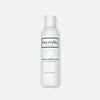What's inside
What's inside
 Key Ingredients
Key Ingredients

 Benefits
Benefits

 Concerns
Concerns

No concerns
 Ingredients Side-by-side
Ingredients Side-by-side

Water
Skin Conditioning1,2-Hexanediol
Skin ConditioningPanthenol
Skin ConditioningLimnanthes Alba Seed Oil
Skin ConditioningEthylhexylglycerin
Skin ConditioningSodium Hyaluronate
HumectantDipropylene Glycol
HumectantSphingolipids
EmollientButylene Glycol
HumectantCeramide NP
Skin ConditioningPolyglutamic Acid
Skin ConditioningSaccharide Isomerate
HumectantGluconolactone
Skin ConditioningBeta-Glucan
Skin ConditioningPullulan
Xanthan Gum
EmulsifyingGlycerin
HumectantCarbomer
Emulsion StabilisingTocopherol
AntioxidantCitric Acid
BufferingTromethamine
BufferingSodium Citrate
BufferingSymphytum Officinale Root Extract
Skin ConditioningSodium Phytate
Methyl Glucose Sesquistearate
EmollientHydrogenated Lecithin
EmulsifyingCetearyl Glucoside
EmulsifyingPolyglyceryl-3 Methylglucose Distearate
EmulsifyingCentella Asiatica Extract
CleansingWater, 1,2-Hexanediol, Panthenol, Limnanthes Alba Seed Oil, Ethylhexylglycerin, Sodium Hyaluronate, Dipropylene Glycol, Sphingolipids, Butylene Glycol, Ceramide NP, Polyglutamic Acid, Saccharide Isomerate, Gluconolactone, Beta-Glucan, Pullulan, Xanthan Gum, Glycerin, Carbomer, Tocopherol, Citric Acid, Tromethamine, Sodium Citrate, Symphytum Officinale Root Extract, Sodium Phytate, Methyl Glucose Sesquistearate, Hydrogenated Lecithin, Cetearyl Glucoside, Polyglyceryl-3 Methylglucose Distearate, Centella Asiatica Extract
Hamamelis Virginiana Water
AstringentWater
Skin ConditioningAlcohol
AntimicrobialGlycerin
HumectantPolysorbate 20
EmulsifyingLeuconostoc/Radish Root Ferment Filtrate
AntimicrobialSodium Lactate
BufferingSodium PCA
HumectantSodium Gluconate
Skin ConditioningO-Cymen-5-Ol
AntimicrobialSorbitol
HumectantProline
Skin ConditioningFructooligosaccharides
HumectantGlucosamine Hcl
Gluconolactone
Skin ConditioningSodium Hyaluronate
HumectantSodium Benzoate
MaskingPhenethyl Alcohol
MaskingCaprylyl Glycol
EmollientPotassium Sorbate
PreservativeHamamelis Virginiana Water, Water, Alcohol, Glycerin, Polysorbate 20, Leuconostoc/Radish Root Ferment Filtrate, Sodium Lactate, Sodium PCA, Sodium Gluconate, O-Cymen-5-Ol, Sorbitol, Proline, Fructooligosaccharides, Glucosamine Hcl, Gluconolactone, Sodium Hyaluronate, Sodium Benzoate, Phenethyl Alcohol, Caprylyl Glycol, Potassium Sorbate
 Reviews
Reviews

Ingredients Explained
These ingredients are found in both products.
Ingredients higher up in an ingredient list are typically present in a larger amount.
Gluconolactone is a PHA. PHAs are a great gentle alternative to traditional AHAs.
When applied, Gluconolactone has the same affect on skin as AHAs such as lactic acid. It helps dissolve the dead skin cells in the top layer of your skin. This improves texture and brightens the skin.
PHAs are more gentle than AHAs due to their larger structure. They do not penetrate as deeply as AHAs and take a longer time to dissolve dead cells. Studies show PHAs do not cause as much irritation.
Gluconolactone has some interesting properties:
In a 2004 study, Gluconolactone was found to prevent UV damage in mouse skin cells and has not been found to increase sun sensitivity. However, we still recommend wearing SPF daily.
This ingredient is is an created by reacting gluconic acid with an alcohol.
Learn more about GluconolactoneGlycerin is already naturally found in your skin. It helps moisturize and protect your skin.
A study from 2016 found glycerin to be more effective as a humectant than AHAs and hyaluronic acid.
As a humectant, it helps the skin stay hydrated by pulling moisture to your skin. The low molecular weight of glycerin allows it to pull moisture into the deeper layers of your skin.
Hydrated skin improves your skin barrier; Your skin barrier helps protect against irritants and bacteria.
Glycerin has also been found to have antimicrobial and antiviral properties. Due to these properties, glycerin is often used in wound and burn treatments.
In cosmetics, glycerin is usually derived from plants such as soybean or palm. However, it can also be sourced from animals, such as tallow or animal fat.
This ingredient is organic, colorless, odorless, and non-toxic.
Glycerin is the name for this ingredient in American English. British English uses Glycerol/Glycerine.
Learn more about GlycerinSodium Hyaluronate is hyaluronic acid's salt form. It is commonly derived from the sodium salt of hyaluronic acid.
Like hyaluronic acid, it is great at holding water and acts as a humectant. This makes it a great skin hydrating ingredient.
Sodium Hyaluronate is naturally occurring in our bodies and is mostly found in eye fluid and joints.
These are some other common types of Hyaluronic Acid:
Learn more about Sodium HyaluronateWater. It's the most common cosmetic ingredient of all. You'll usually see it at the top of ingredient lists, meaning that it makes up the largest part of the product.
So why is it so popular? Water most often acts as a solvent - this means that it helps dissolve other ingredients into the formulation.
You'll also recognize water as that liquid we all need to stay alive. If you see this, drink a glass of water. Stay hydrated!
Learn more about Water